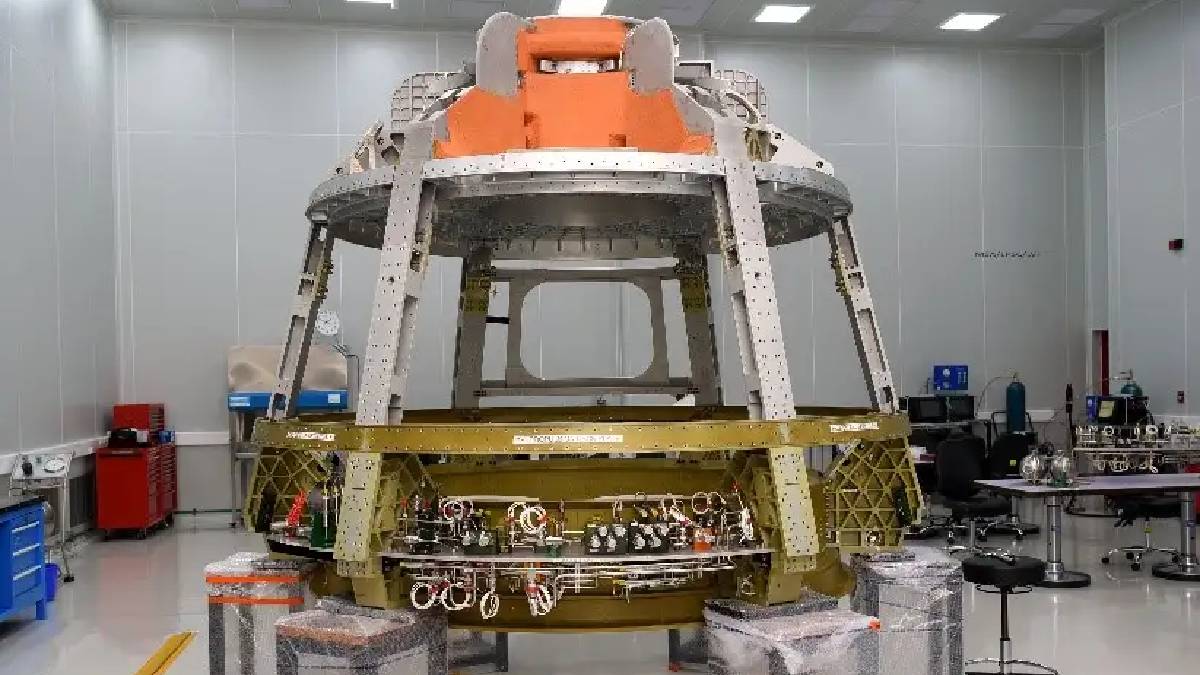 |
|
The Indian Space Research Organisation (ISRO) has achieved a significant milestone in its ambitious Gaganyaan human spaceflight program. The Liquid Propulsion Systems Centre (LPSC) successfully dispatched the Crew Module for the inaugural uncrewed mission (G1) to the Satish Dhawan Space Centre in Sriharikota on January 21, 2025. This marks a crucial step forward in India's journey to establish itself as a major player in human space exploration. The successful integration of the Crew Module Propulsion System (CMPS) is a testament to ISRO's engineering prowess and meticulous planning. The CMPS, a bi-propellant-based Reaction Control System (RCS), is vital for precise control of the crew module during the crucial descent and re-entry phases. Its ability to manage pitch, yaw, and roll using twelve 100N thrusters ensures a safe and controlled return to Earth. This sophisticated system is complemented by a pressurization system, high-pressure gas bottles, and a propellant feed system, all working in perfect harmony to guarantee a successful mission.
The meticulous attention to detail in the development of the CMPS highlights ISRO's commitment to ensuring astronaut safety. The 100N thrusters, small yet powerful rocket motors, provide the necessary maneuvering capabilities for precise control. The integration of the Crew Module Uprighting System (CMUS), developed by the Vikram Sarabhai Space Centre (VSSC), further underscores the collaborative nature of this monumental undertaking. The CMUS plays a critical role in maintaining the correct orientation of the crew module during the descent. Before the module's final journey to the U R Rao Satellite Centre in Bengaluru for orbital module integration, it will undergo further integration processes at VSSC, including the assembly of the avionics package, electrical harnessing, and rigorous checks. Each step is meticulously executed to minimize risks and maximize the chances of a successful mission.
The successful dispatch of the Crew Module is not only a significant achievement for ISRO but also a testament to India's growing capabilities in space technology. This ambitious project represents years of dedicated research, development, and testing, involving hundreds of engineers and scientists. The G1 mission serves as a crucial test bed for the entire Gaganyaan system, allowing ISRO to identify and address any potential issues before embarking on the crewed mission. Data gathered from the uncrewed flight will be invaluable in refining procedures and improving the overall safety and reliability of the Gaganyaan system. The successful completion of this phase is an important step, paving the way for future human spaceflight endeavors. The successful development and deployment of the CMPS underscores ISRO's ability to engineer and integrate complex systems vital for human spaceflight.
Beyond the Gaganyaan project, the Indian government's commitment to expanding its space exploration capabilities is evident in its recent approval for the construction of a new launch pad at the Satish Dhawan Space Centre. This addition will significantly enhance ISRO's launch capacity, providing a backup for the existing launch pad and supporting future missions. This investment reflects the government's recognition of the strategic importance of space technology and its potential to contribute to national progress and global collaboration. The new launch pad is a clear indication of India's long-term vision for its space program and its aspiration to become a leading nation in space exploration. The construction of the new facility is a vital component of India’s ongoing efforts to bolster its space exploration infrastructure and further establish itself as a world leader in the field. It directly supports ISRO's ambitious plans for future missions, ensuring a greater level of operational redundancy and increasing launch capacity.
The Gaganyaan program is not just about technological advancement; it represents a significant national endeavor, inspiring a new generation of scientists and engineers. It showcases India's growing prowess in advanced technologies and its determination to achieve ambitious goals on the global stage. The program's success will not only enhance India's prestige in the international arena but also provide a significant boost to its scientific and technological capabilities, paving the way for greater breakthroughs in various fields. The project is a beacon of hope, highlighting the potential of science and technology to solve complex problems and propel humanity towards a brighter future. The successful completion of the Gaganyaan program would symbolize India's arrival as a leading player in the global space race, further cementing its position as a major force in the 21st-century technological landscape. The long-term implications of this mission extend beyond technological advancements; it inspires national pride, fosters international collaboration, and propels India to the forefront of global space exploration.
Source: ISRO achieves major milestone, dispatches crew module for Gaganyaan's inaugural uncrewed mission
